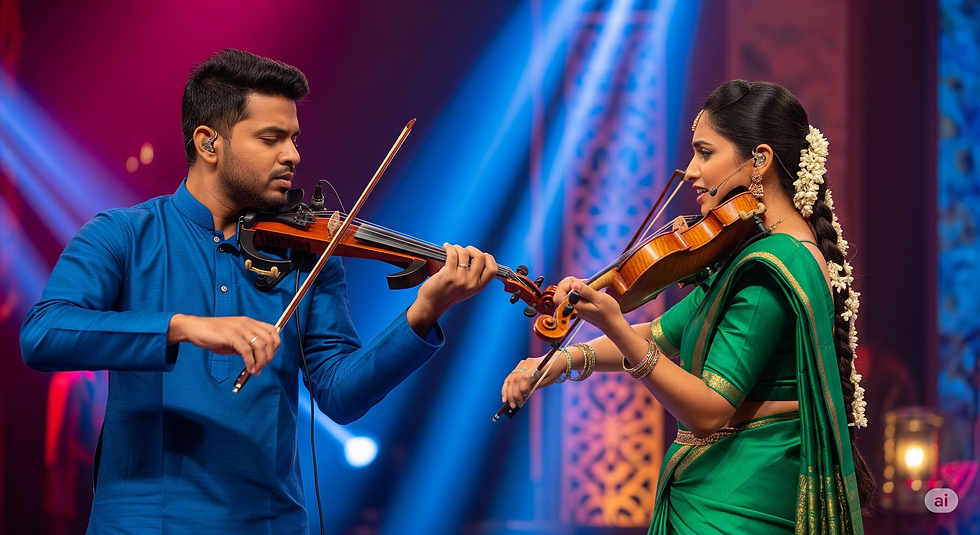"Dancing with Rhythm: Jhampe Taalam Alankaaram for Carnatic Violinists"
- Sharanya naidu
- Mar 30
- 2 min read
Updated: Jul 28
In the world of Carnatic music, rhythm (or taalam) plays a fundamental role in shaping the structure and aesthetics of compositions. One of the more unique and nuanced taalams in this tradition is the Jhampe Taalam. For Carnatic violinists, mastering Jhampe Taalam along with its alankaarams (ornamental patterns) can significantly enhance rhythmic proficiency and musicality.

What is Jhampe Taalam?
Jhampe Taalam is a seven-beat rhythmic cycle (taala) consisting of two parts:
Laghu (1 dhrutam + 1 anudhrutam) - The laghu consists of a variable number of beats, usually defined by the jaati (beat type).
Dhrutam (2 beats) - This segment is fixed as two beats marked by a clap and a wave.
Typically, Jhampe Taalam is set in Misra Jaati (7 beats in the laghu), making the complete cycle a total of 10 beats (7 + 2 + 1). The rhythmic structure can be represented as:
Clap, count 1, 2, 3, 4, 5, 6, 7, Clap, Wave
Alankaaram in Jhampe Taalam
An alankaaram is a decorative rhythmic pattern that helps musicians internalize complex rhythmic structures. Practicing alankaarams in Jhampe Taalam not only builds rhythmic accuracy but also hones the ability to synchronize melody with rhythm.
Basic Alankaaram Pattern
One of the fundamental alankaarams in Jhampe Taalam involves dividing the cycle into segments with consistent syllables, like:
Ta Ka Dhi Mi | Ta Ka Dhi Mi | Ta Ka Ta Ka
By repeating this pattern over several cycles, violinists can develop the muscle memory needed to maintain consistent rhythm while executing melodic phrases.
Tips for Practicing Jhampe Taalam on the Violin
Start Slowly: Begin with a slow tempo to get accustomed to the structure. Use a metronome to maintain accuracy.
Break Down the Cycle: Practice each segment of the taalam separately before combining them.
Focus on Bowing Techniques: Smooth and even bowing helps maintain rhythmic integrity.
Combine with Simple Melodic Phrases: Once comfortable with the rhythm, practice playing simple compositions while maintaining the taalam.
Use Vocal Recitation: Recite the alankaaram patterns vocally before translating them to the violin to internalize the rhythm.
Why Practice Jhampe Taalam Alankaaram?
Learning Jhampe Taalam and its alankaarams offers several benefits for Carnatic violin learners:
Enhanced Rhythmic Dexterity: Understanding complex taalams improves overall rhythmic sense.
Precision and Coordination: Synchronizing bowing with rhythmic patterns develops accuracy.
Deeper Musicality: Mastering intricate taalams allows for more expressive and confident performance.
Conclusion
Mastering Jhampe Taalam alankaaram on the violin is a rewarding challenge that sharpens both technical and musical skills. Incorporating these rhythmic exercises into your daily practice will enhance your understanding of complex rhythmic structures, ultimately making you a more versatile and confident Carnatic violinist. Happy practicing!



Comments